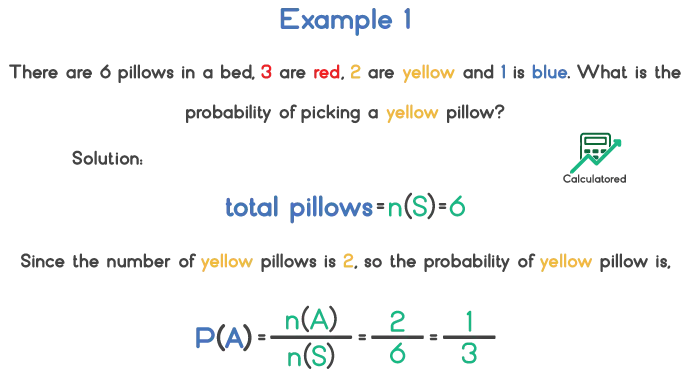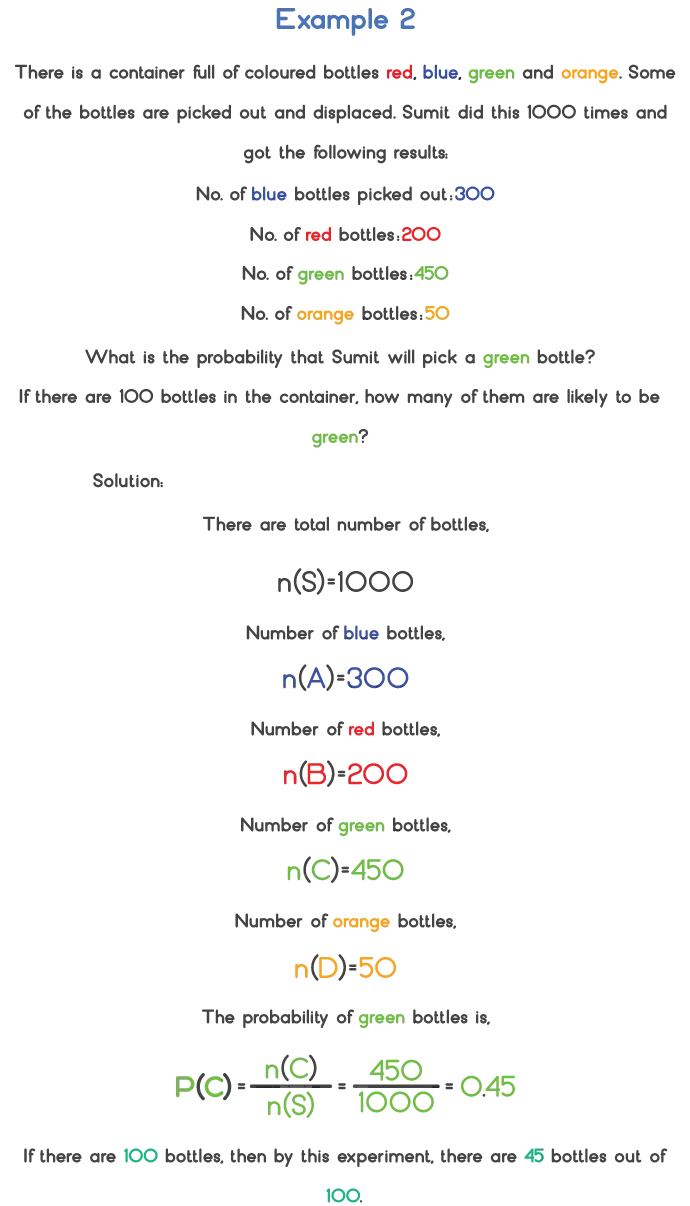List of Probability Formulas - Way to Calculate Probability Distribution with Solved Examples
In this article, you will learn what is meant by probability and how it is calculated.
What is Probability?
Probability is the measure of the number of ways an event occurs. It is an essential tool to find how much an event of an experiment will occur in a given number of trials. It is used to find the possibility of an event occurring. Probability can also be defined as the ratio of the number of favourable outcomes to the total number of outcomes.
In mathematics, probability deals with the possibility of the occurrence of a random event. It calculates the possibility of an outcome to occur or not. It lies between 0 and 1. It means that there is a possibility or not a possibility of happening.
Probability Formula
The probability formula defines the likelihood of the happening of an event. It is the ratio of the number of favourable outcomes by the total number of outcomes. The formula is:


This theoretical probability formula is used to calculate the probability of an event to occur.
How to Calculate Probability Distribution?
If there are n(S) number of ways of happenings of an event and n(A) are the possible number of happenings, then the probability of A can be calculated as:
$$ P(A) \;=\; \frac{n(A)}{n(S)} $$
Basically, the probability of an event is calculated by dividing the number of favourable outcomes of the event to the total number of outcomes. But here we are providing you a stepwise method of calculating probability. See the below steps:
- Calculate the number of favourable outcomes.
- Calculate total number of outcomes.
- Divide the favourable outcomes by the total number of outcomes.
Here are some experimental probability examples to understand how the probability is calculated.




Basic Probability Formulas
- Addition Formula $$ P(A or B) \;=\; P(A) \;+\; P(B) \;-\; P(A \cap B) $$ $$ P(A \cup B) \;=\; P(A) \;+\; P(B) \;-\; P(A \cap B) $$
- Complement Formula $$ P(A) \;+\; P(A') \;=\; 1 $$ $$ P(A') \;=\; 1 \;-\; P(A) $$
- Multiplication Formula $$ P(A and B) \;=\; P(A) \cdot P(B) $$ $$P(A \cap B) \;=\; P(A) \cdot p(B|A)$$
- Conditional Formula $$ p(B|A) \;=\; \frac{P(A \cap B)} {P(A)} $$
FAQ’s
What is the Difference between Theoretical and Experimental Probability?
Theoretical probability defines how likely an event is to occur. It is based on knowledge and mathematics. In comparison, the experimental probability is based on trials of the experiment.
What is Experimental Probability?
The experimental probability is based on the trials of an experiment to find the possibility of favourable results.
What is Probability in Maths?
Probability means the possibility of an event to occur. In mathematics, it measures favourable results over the total results.


